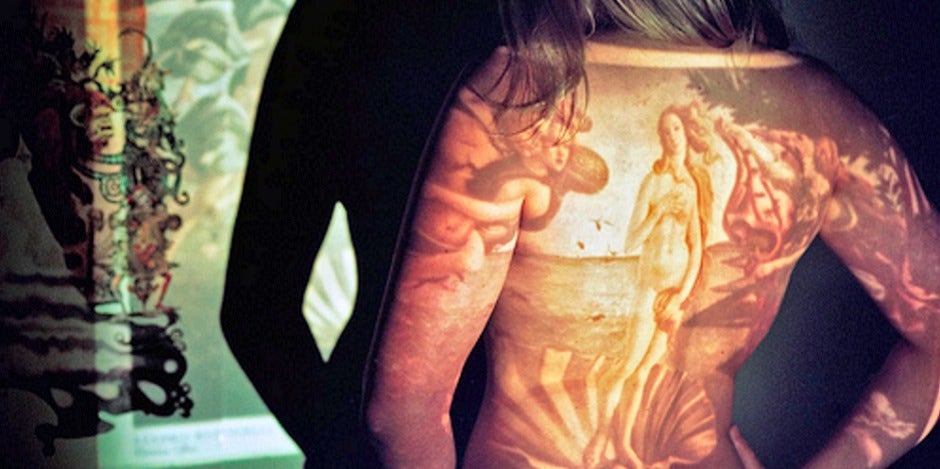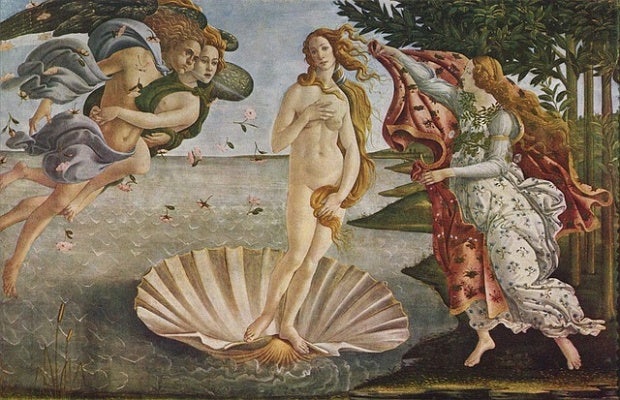UM, What's Up With The Lack Of Vaginas In Art?
After thousands of years, Georgia O'Keeffe's flowers aren't nearly enough.
 WeHeartIt
WeHeartIt In my travels, I’ve been lucky enough to see a lot of art. I’ve seen the statue of Michelangelo’s David and Botticelli’s The Birth of Venus, both in Florence, Italy, Laocoön and his sons, in the Vatican, and my two personal favorites Venus de Milo and Winged Victory of Samothrace, both in The Louvre in Paris.
I appreciate the fact that these aren’t some obscure, haughty pieces that, if I mentioned them in a crowded room of people, no one would know what they are. They move something in me.
They’re also, as I realized this past weekend, void of vaginas.
To be honest, I’m not sure if and when it would have come to me — this lack of vagina situation — unless someone had pointed it out. I’ve been going to museums since I was a child and have become accustomed to penises so accurately portrayed in both sculpture and paintings that the artist was even kind enough to include the pubic hair that entangles man’s favorite member.
But women in art, however, are either seen shrouded in the same way, as it is with Venus de Milo and The Birth of Venus, or they lack recognition of their sexuality altogether, as is the case of The Three Graces.
There is no acknowledgment of a vagina: no pubic hair, protruding labia, a slight hint of a vulva.
Instead, it’s as if their stomachs just melt into their legs, and you’re left thinking how lucky these women are that they probably don’t have to deal with their period, but how sad it is that they won’t get to experience sex.
In fact, this is not a portrayal of women at all; it’s the portrayal of an ideal, of something muted and watered down that doesn’t exist.
While reading Syreeta McFadden’s piece in The Guardian that I came to realize that the lack of female genitals, once you notice it, is something that can’t be unseen.
It’s a fact in most ancient art that the penis is praised — jutting out in all its glory as if dictating its authority for all who see it — while women are meek caricatures of the female anatomy, “more like Barbie,” wrote McFadden, “than authentic depictions of women.”
“These marbled statues represented a value — an idealized value — of male and female roles in society that codified a power dynamic and a social order that persists in so many ways today. It’s such a gesture that seems thoughtless until you see it repeated over and over; it becomes clear that it is intentional and deliberate, and the lasting effect, erases feminine humanity. Even the most enlightened of us still have to unlearn cultural definitions of our sex that cast our vaginas as profane, obscene, ugly,” writes McFadden.
And while we walk away from our museum experience thinking we are unaffected, we are not. We walk past the graffiti on the way home, the stuff more likely to portray penises of varying sizes than vaginas, and reach for our phone to make an appointment to get a Brazilian wax.
We live in a world where waxing away the “vile” pubic hair of our body is the norm and where products like douches and bidets are meant to wash the “dirty” vagina clean of its natural smell.
Our society decided long ago that vaginas were a source of shame and the sexuality that transpires from them — or rather from women, more specifically —is something that should be shunned.
It’s only been within the last couple decades that women owning their sexuality came to the forefront but even still, modern day art lacks realistic depictions of the vagina. And because of this, girls and women regard their vagina as gross, or “ugly,” as Charlotte York declared in Sex and the City in the episode where her vagina was depressed … probably because she thought it was ugly.
Although we can look to the work of Georgia O’Keeffe and Hannah Wilke as hope, they're still the minority.
What we need to do is understand that our vagina is just as powerful as a penis.
It deserves to be seen in all its details and not brushed out from a masterpiece. We may not be able to change art history but we can at least recognize in ourselves how awesome our vagina is. It’s part of the human body and that’s a far greater masterpiece than anything you’ll see hanging in The Louvre.


